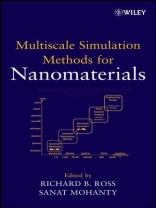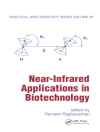Molecular modelling, with greater accuracy than ever, allows for the fastest and most economical way of experimenting before creating a new product or material. While the scientific world has generally not solved the problem, methods have been developed which are proving feasible in solving specific problems or predicting specific phenomena or properties.
Led by editors who have expertise in this area, Multiscale Simulation Methods for Materials explores the impact of using an arsenal of molecular modelling tools for various simulations in industrial settings. It provides an overview of the available methods for providing atomistic simulation of a broad range of materials using our increased understanding of molecular scale, nanoscale, mesoscale, and macroscale phenomena. The strengths and weaknesses of the methods at hand are discussed within a context of real-world examples.
Unlike other texts, this book focuses on the most cutting-edge area within computational chemistry and molecular modelling: macromolecular simulations of a range of materials, and is aimed more toward the chemistry and chemical engineering communities than any previously published titles in this area.
Tabela de Conteúdo
1. Overview of Multi-Scale Simulation Methods for Materials (Sanat
S. Mohanty and Richard B. Ross).
2. Influence of Water and Fatty Acid Molecules on Quantum
Photoinduced Electron Tunneling in Self-Assembled Photosynthetic
Centers of Minimal Protocells (A. Tamulis, V. Tamulis, H. Ziock,
and S. Rasmussen).
3. Optimizing the Electronic Properties of Carbon Nanotubes
using Amphoteric Doping (Bob G. Sumpter and Vincent Meunier).
4. Using Order and Nanoconfinement to Tailor Semiconducting
Polymers – A Combined Experimental and Multiscale Computational
Study (Michael L. Drummond, Bob G. Sumpter, Michael D. Barnes,
William A. Shelton, Jr., and Robert J. Harrison).
5. Coarse Grain to Atomistic Mapping Algorithm: A Tool for
Multiscale Simulations (Steven O. Nielsen, Bernd Ensing, Preston B.
Moore, and Michael L. Klein).
6. Microscopic Insights into the Dynamics of Protein-Solvent
Mixtures (Taner E. Dirama and Gustavo A. Carri).
7. Mesoscale Simulations of Surface Modified Nanospheres in
Solvents (Sanat Mohanty).
8. Fixing Interatomic Potentials Using Multiscale Modeling: ad
hoc Schemes for Coupling Atomic and Continuum Simulations (Clifford
W. Padgett, J. David Schall, J. Wesley Crill, and Donald W.
Brenner).
9. Fully Analytic Implementation of Density Functional Theory
for Efficient Calculations on Large Molecules (Rajendra R. Zope and
Brett I. Dunlap).
10. Al Nanoparticles: Accurate Potential Energy Functions and
Physical Properties (Nathan E. Schultz, Ahren W. Jasper, Divesh
Bhatt, J. Ilja Siepmann, and Donald G. Truhlar).
11. Large-scale Monte Carlo Simulations for Aggregation,
Self-Assembly and Phase Equilibria (Jake L. Rafferty, Ling Zhang,
Nikolaj D. Zhuravlev, Kelly E. Anderson, Becky L. Eggimann, Matthew
J. Mc Grath, and J. Ilja Siepmann).
12. New QM/MM Models for Multi-scale Simulation of Phosphoryl
Transfer Reactions in Solution (Kwangho Nam, Jiali Gao, and Darrin
M. York).
13. Modeling the Thermal Decomposition of Large Molecules and
Nanostructures (Marc R. Nyden, Stanislav I. Stoliarov, and Vadim D.
Knyazev).
14. Predicting Dynamic Mesoscale Structure of Commercially
Relevant Surfactant Solutions (Fiona Case).
Sobre o autor
Richard B. Ross, Ph D, has been a member of 3M Company’s
Corporate Materials Modeling Group since 1997. Dr. Ross’s research
at 3M focuses on applying computational chemical modeling methods
to a wide range of research applications. He has coauthored
thirty-three scientific articles, including five book chapters, and
coedited a symposium proceedings book.
Sanat Mohanty, Ph D, is a research scientist at 3M Company’s
Corporate Research Lab, focusing on the development of materials by
manipulating self-assemblies of small molecules. Dr. Mohanty has
written more than a dozen peer-reviewed journal papers, three book
chapters, plus a chapter in the Encyclopedia of Chemical Processing
on mesoscale modeling and analysis.












